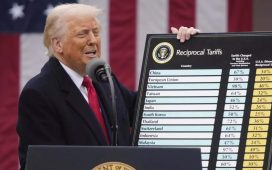With the Make in India initiative completing a decade on Wednesday, Goyal told ET that the programme was not built on any China-plus-one strategy, or Anywhere-but-China Policy but with a conviction to bring manufacturing to the country, provide jobs and entrepreneurial opportunities.
The Make in India initiative was launched on September 25, 2014 to facilitate investment, build world-class infrastructure, and make India a hub for manufacturing, design, and innovation.

“At that time, there was no China plus one, or no anti-China mood. We’ve been successful in all of this, despite two wars, despite two years lost in Covid, we’ve achieved all of the above,” Goyal said.Emphasising the government’s zero tolerance for corruption, the minister said it has played an “immense role in attracting foreign direct investment (FDI), which have been at record levels year after year” but ruled out any immediate changes in the country’s FDI policy.
In the 10 years till FY24, FDI inflows have more than doubled to $667 billion from $304 billion in the previous 10 years (FY05-14), with over 90% of inflows received through the automatic route.
“The culture to attract and promote manufacturing in India is now firmly established. It’s a big win,” Goyal said, adding that production linked incentive (PLI) schemes have given a boost to 14 sectors.
In 2020, the government rolled out the PLI schemes with a Rs 1.97 lakh crore outlay to enhance domestic manufacturing. PLI schemes from the electronics and pharmaceutical sectors garnered substantial investments.
“Our ambition is that every electronic device should have a Make in India component,” said Goyal.
Entrepreneurial spirits, industrial share
The minister sought more entrepreneurial action among the youth in the quest for a bigger Make in India.
“In the coming days, we will have to look at a greater outreach to the youth of India, with opportunities, with explaining to them how their ideas can come up to fruition. We’ll be running a joint campaign with the education and skill development ministries to train or handhold youngsters in their entrepreneurial journey,” Goyal said.
He also said India would have to grow faster for the manufacturing sector to become 25% of the GDP.
“We are the fastest growing economy in the world. Even to maintain that, we have to take manufacturing up at very significant levels, but we are committed to take it up to 25%, for which we’ll have to grow at probably one and a half times the rate of economic growth,” Goyal said.
The share of manufacturing in India’s GDP is around 17% currently.
“Our plan is that during the Amrit Kaal (by 2047), we can aspire to become a manufacturing powerhouse,” he said.
Noting that the government has been engaging with both local and international investors, Goyal said, “It is amazing to see the enthusiasm and the speed at which large investments are being rolled out”.
“Make in India is a journey… you can expect a number of new initiatives coming out. Our effort is to be poised for significant steps so that entrepreneurship, investments and startups are encouraged. Our handicrafts and handloom sector, textile and all traditional sectors will get a leg up,” he said.
The National Logistics Policy, national single window system, and Jan Vishwas (Amendment of Provisions) and law to decriminalise 183 provisions in 42 legislations have been key in promoting Vocal for Local.










